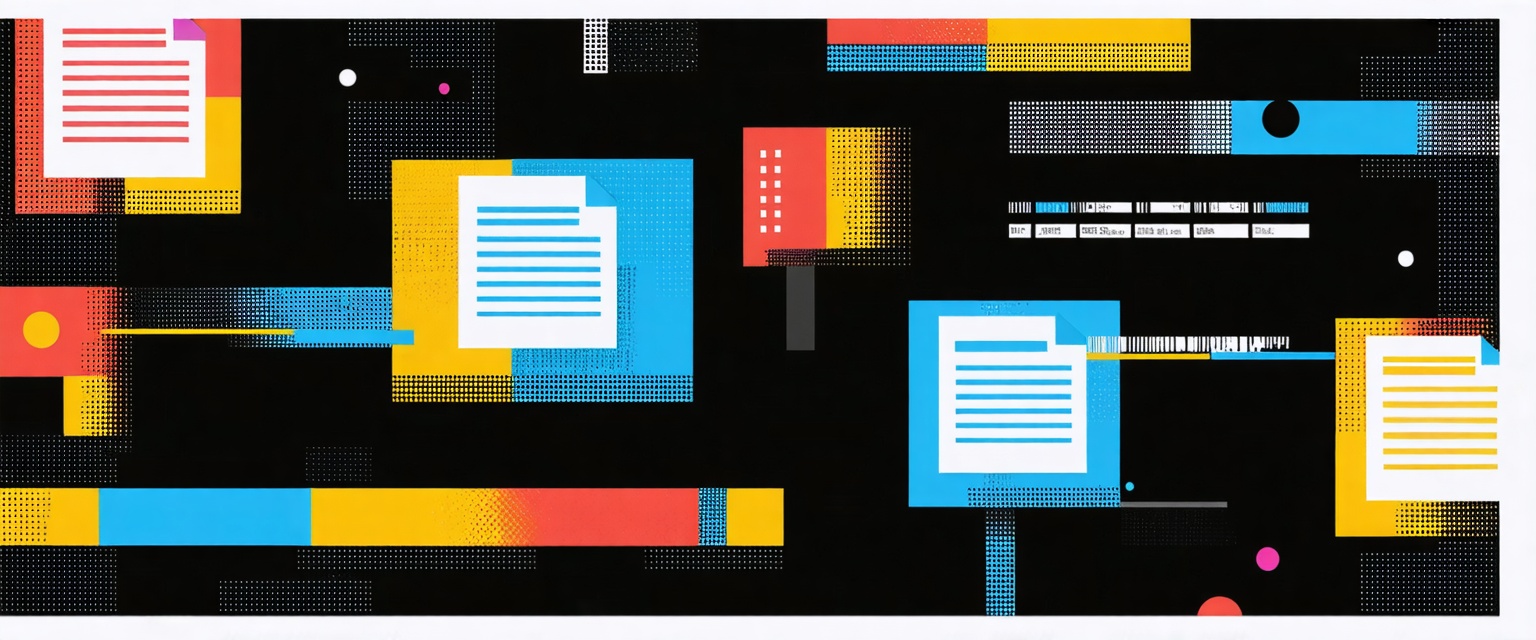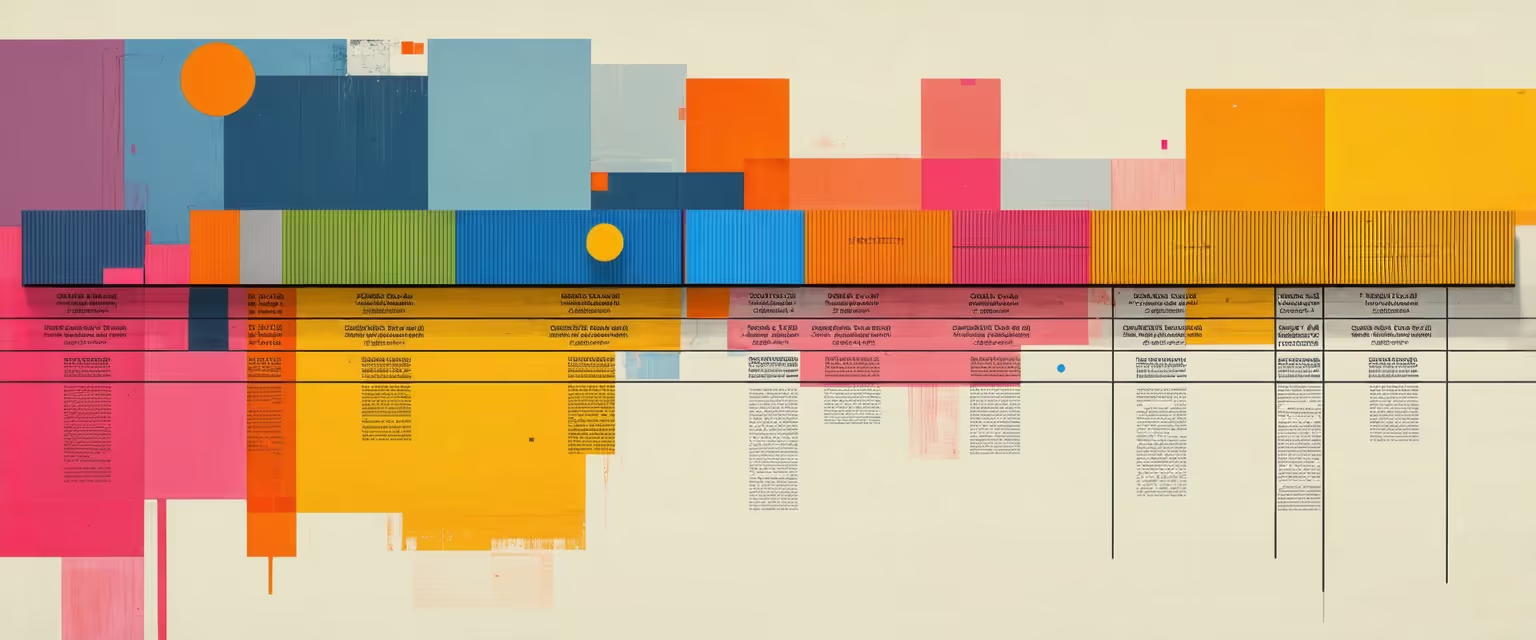Automate RFP document processing to respond faster and win more bids. Extract requirements in hours instead of weeks with AI-powered analysis
Another 200-page RFP just landed with a two-week deadline. Requirements are buried across technical specs, compliance sections, and project descriptions. Your team will spend days just figuring out what the client wants, leaving barely enough time to write a competitive response.
Competitors somehow submit faster without missing details, and you lose bids. Not because your solution is weak, but because you can't respond fast enough or you miss a requirement on page 147.
Manual document analysis creates the bottleneck. While you're extracting requirements from one RFP, two more arrive with overlapping deadlines. You either respond to three thoroughly or six poorly.
This article covers six strategies that help you automate the document processing bottlenecks that limit your response capacity and win rates.
Strategy #1: Automate Requirement Extraction from Complex RFPs
Missing one requirement disqualifies your proposal. RFPs arrive with requirements scattered across technical specifications, compliance appendices, and project descriptions. Some explicit, others implied or cross-referenced across sections.
Your team spends weeks extracting requirements manually. Engineers pull technical specs. Compliance officers track regulatory requirements. Project managers coordinate to ensure nothing falls through.
Something still gets missed - a certification buried in legal terms, a deliverable mentioned once, a compliance clause referencing another document. Traditional requirement matrices and multiple review rounds are slow and error-prone when you're racing against deadlines.
Datagrid's document processing agents read the entire RFP and extract every requirement simultaneously from technical specs, compliance clauses, and project descriptions.
The agents identify explicit requirements, flag implied ones that reference other sections, and catch cross-referenced items spanning multiple documents. They categorize by type and assign priority based on language like "must," "shall," and "required."
What took weeks happens in hours. Your team crafts responses instead of hunting for requirements. You take on more RFPs because analysis no longer bottlenecks capacity.

Strategy #2: Cross-Reference Historical Proposals for Proven Content
Requirements extracted, time to respond. Your company has done this before - proven technical approaches, safety protocols that won bids, project methodologies that impressed evaluators. Finding that content when you need it is the problem.
You remember responding to a similar safety requirement for a hospital project, but which proposal was it?
Searching through shared drives and project folders takes longer than writing from scratch, so teams abandon the hunt and recreate content that already exists somewhere in their files. Years of institutional knowledge go unused because finding it is harder than starting over.
Datagrid's AI agents cross-reference current RFP requirements against your library of past proposals.
When the RFP asks for a safety protocol, agents identify where you've addressed similar requirements, pull relevant sections, and note which proposals won. Proven content surfaces immediately instead of staying buried in file systems.
Your proposals build on what worked. Teams tailor existing content instead of recreating it from scratch.
Beyond just reusing content, you identify patterns from past wins - specific technical approaches that impressed clients, safety protocols that set you apart, and project execution frameworks that demonstrated unique capability.
Strategy #3: Verify Compliance Requirements Across All Documents
Content in place, but compliance can still sink you. Professional services RFPs demand safety certifications, bonding requirements, insurance specifications, and regulatory frameworks. Miss one item, and evaluators disqualify your proposal before reading your technical approach.
Compliance requirements don't announce themselves in a convenient checklist. Safety certifications appear in technical specifications, insurance requirements in legal terms, bonding details in financial sections, and regulatory compliance in project descriptions.
You create checklists by hand, cross-referencing requirements across sections, checking certifications for expiration dates (like OSHA in construction), verifying bonding capacity matches project size, and confirming specific insurance riders exist. Miss one item during manual verification, and your proposal gets rejected regardless of technical merit.
Datagrid's agents scan the entire RFP and identify every compliance requirement—safety certifications in technical specs, insurance requirements in legal terms, bonding details in financial sections, and regulatory frameworks in project descriptions.
The agents extract and categorize these requirements automatically while your team focuses on the technical response. You see all compliance items in one place instead of hunting through scattered sections.
Strategy #4: Qualify RFPs Before Investing Response Resources
Fast, thorough responses don't help if you're chasing the wrong opportunities. You receive dozens of RFP opportunities but have limited team capacity. Chasing opportunities that don't fit your capabilities wastes resources that should go toward winnable bids.
When an RFP arrives, you need to quickly assess fit - whether it matches your expertise, whether you're competitively positioned to win, and whether the timeline and requirements are realistic for your team.
This assessment requires understanding the RFP's core requirements, but that understanding typically requires days of analysis - the same analysis needed for response.
Assessment also includes whether you can price competitively. Fast requirement extraction reveals project scope and costs quickly. You determine if the opportunity fits your pricing model before investing weeks in response development.
Teams either skip proper qualification and waste resources on unwinnable bids or invest significant time qualifying each RFP, which limits how many opportunities they can pursue.
Poor qualification means spending weeks developing proposals for projects that don't fit your capabilities, only to lose to more qualified competitors. Meanwhile, you declined opportunities that actually matched your strengths because you were committed elsewhere.
Rapid requirement analysis changes the qualification equation. When you can understand an RFP's core requirements in hours instead of days, you can assess fit quickly without burning response capacity.
You evaluate alignment with your capabilities, competitive positioning, and whether the project is worth pursuing.
Strategic qualification lets you focus resources on your strongest opportunities. You respond to fewer RFPs but win at higher rates. Your team isn't exhausted from chasing every opportunity - they're focused on proposals where you're genuinely competitive.

Strategy #5: Structure Response Workflows for Consistent Execution
Structured response workflows turn proposal development from chaotic coordination into repeatable execution. Fast requirement analysis and historical content retrieval give you the raw materials for a response.
Actually writing the proposal requires coordination across technical leads, project managers, compliance officers, and pricing specialists - and that's where most teams fall apart.
Everyone needs different information at different times. Technical writers wait for specifications from engineers. Compliance can't complete its section until the legal review requirements are met. Pricing needs technical approach details to estimate costs.
Nobody knows what anyone else is working on. Documents circulate via email with filenames like "RFP_Response_Final_v3_REAL_FINAL.docx." Version control breaks down, content gets duplicated or missed, and the proposal comes together in a chaotic final 48 hours before the deadline.
Structured processes prevent this chaos. Standardized outlines that match RFP sections, clear ownership for each section with deadlines, review checkpoints before final assembly, single source of truth for document versions. Structure doesn't slow teams down - it prevents the chaos that causes last-minute crises.
Automated requirement analysis feeds directly into your structured outline. Historical content retrieval provides templates that fit your standard structure. Compliance checklists integrate with response frameworks. Team members know exactly what they're responsible for and when it's due.
Structure makes proposal development repeatable and scalable. New team members onboard faster because the process is documented. Quality stays consistent across proposals.
Combined with automated analysis and content retrieval, structured execution turns proposal development into a competitive capability.
Strategy #6: Focus on What Wins Bids While Automation Processes Documents
When requirement extraction takes hours instead of weeks and compliance verification runs automatically, you gain something more valuable than speed—capacity for the strategic work that actually wins competitive bids.
Most teams spend weeks on document analysis, leaving strategic differentiation, pricing decisions, and evaluator relationships as afterthoughts assembled in the final 48 hours before the deadline.
Automation shifts this equation. Document processing happens in the background while your team focuses on what separates winning proposals from technically compliant ones.
Your historical proposals show what worked before. Look at past wins to identify the technical approaches that impressed clients, the safety protocols that set you apart, and the execution frameworks that demonstrated capability.
When agents surface this content and note which proposals won, you build on proven differentiators instead of writing generic statements that sound like every competitor.
Pricing needs time to get right. When you understand project scope early through fast requirement extraction, you can develop competitive pricing instead of rushing estimates at the deadline. You decide where to compete aggressively on price and where to protect margins, positioning value beyond just cost.
Relationships with evaluators matter as much as proposal content. Pre-bid meetings let you understand priorities. Clarifying questions show you're engaged. Site visits build confidence in your team's capability.
When document analysis doesn't consume weeks, your team has time for these activities. Competitors still buried in manual extraction can't make this investment.
Automation handles document processing. Your team handles strategy. This is where bids get won.
Automate RFP Processing with AI Agents
Hours every week extracting requirements from 200-page RFPs, section by section. Compliance details were transcribed manually from scattered appendices into tracking spreadsheets.
Historical proposal content was recreated from scratch because finding past wins takes longer than rewriting. Most teams accept this as the cost of winning bids, but it doesn't have to be.
Datagrid eliminates these RFP processing bottlenecks.
- Process complex RFPs in hours instead of weeks: Extract requirements, compliance items, and deliverables from technical specifications, legal terms, and project descriptions simultaneously. An analysis that takes weeks of manual review is now completed in hours.
- Cross-reference historical proposals automatically: Surface proven content from past wins without searching through scattered files. Agents identify where you've addressed similar requirements and pull relevant sections, noting which proposals won.
- Verify compliance requirements across all documents: Identify every certification, insurance requirement, and regulatory framework buried throughout the RFP.
- Respond to more RFPs without adding headcount: Teams that could thoroughly respond to three RFPs can now handle six with the same resources. Analysis speed no longer caps your response capacity.
- Structure workflows that scale with opportunity volume: Automated requirement extraction feeds directly into standardized response frameworks. Historical content retrieval provides proven templates. Compliance verification runs in the background while your team focuses on writing.
Ready to win more bids without drowning in document processing?
Create a free Datagrid account













